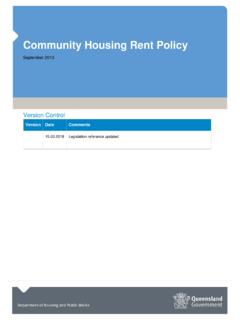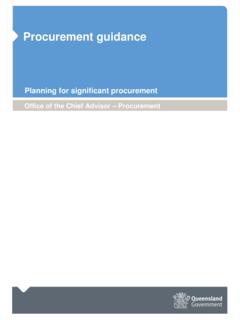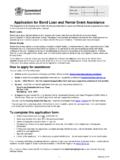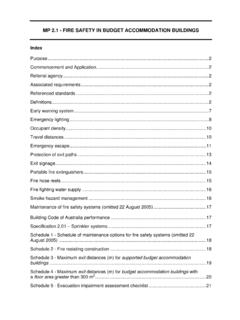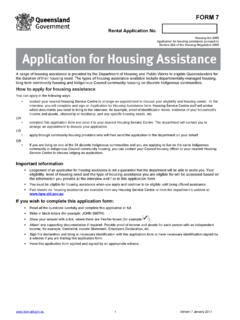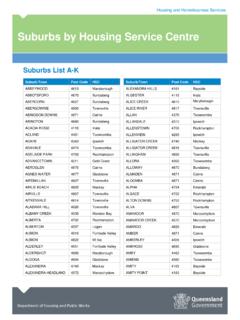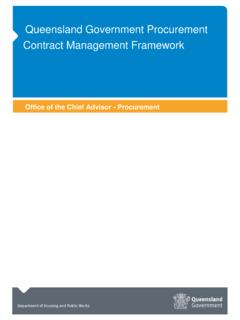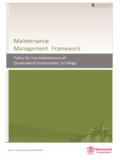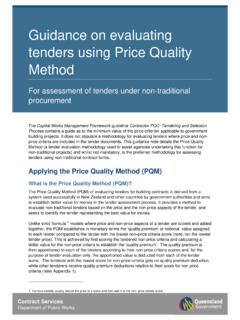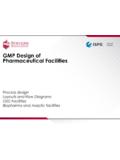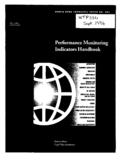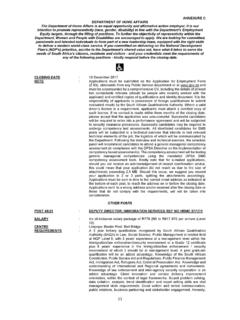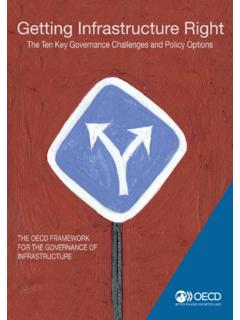Transcription of Estimate Categories and Confidence Levels - …
1 POLICY ADVICE NOTE Capital Works Management Framework Estimate Categories and Confidence Levels An initiative to improve budget formulation for government building projects Building cost estimates can be produced at any time during the life of a project, from initiation through to settlement of the final account. The accuracy of the cost Estimate will vary greatly depending on the degree of information available on the project, and the level of skill and knowledge of building costs of the estimator. As the building project progresses, it is reasonable to expect that the accuracy of the cost Estimate will increase and that there will be a commensurate increase in the level of Confidence in that Estimate .
2 However, project evaluation and program formulation usually require the preparation of cost estimates at an early stage. A budget set very early in the life of a project tends to set expectations. The first Estimate of cost is usually the most remembered, but is also the least accurate. Project proponents have an obligation to seek updated building cost estimates as a project proceeds through the various stages of planning and procurement. That said, users of estimates will be more likely to request an update of estimated costs if they can see that an Estimate is not aligned with the status of a project. The adoption of standard Categories for building cost estimates will ensure easy identification of outdated estimates and facilitate the responsible use of estimates more generally.
3 Background The Department of Housing and Public Works is pursuing a strategy aimed at improving the quality of building cost estimates associated with government building projects. The Capital Capital Works Management Framework 2 Estimate Categories and Confidence Levels : An initiative to improve budget formulation for government building projects Works Management Framework includes a requirement (policy requirement 2) that departments, after prior consultation with the Department of Housing and Public Works, declare the Confidence level of their estimates when presenting budget submissions for building projects to Government. Confidence Levels are determined through the application of the standard Estimate Categories outlined in Table 1 of this policy advice note.
4 Each Estimate category reveals basic information about how and when the building cost Estimate was compiled and how it should be used (including the level of Confidence project stakeholders should have in the Estimate ). Risks involved with the use of building cost estimates If a building cost Estimate is provided without qualification, parameters, inclusions and exclusions, then the user/recipient of that Estimate may unintentionally misquote or misuse it. This is particularly the case when there is no record of when the Estimate was produced and what it included. For example, the scope of works may have changed since the Estimate was produced. The user may not be aware of this change and may continue to assume that the project budget (based on this out-of-date building cost Estimate ) is adequate.
5 Other risks involved with the use of an unqualified or outdated building cost Estimate include: false expectations Project stakeholders can be misled into believing that the funds allocated to the project will definitely deliver a certain scope of works when this scope may change during the life of the project. service delivery compromises Building to an unrealistic budget ultimately leads to compromises in design and scope, which can in turn leave a facility unable to fully support service delivery objectives. delivery pressures Expectations raised by early project estimates can lead to project managers being locked into delivering a project within a budget that no longer reflects the scope of works or market conditions.
6 Estimate Categories : Mitigating the risks involved with building cost estimates The adoption of standard Categories for building cost estimates will help mitigate the risks involved with quoting or relying upon such estimates for budgeting/building procurement purposes. Each Estimate category reveals basic information about how and when the building cost Estimate was compiled and how it should be used. Officers responsible for developing building cost estimates should ensure that each Estimate is accompanied by a reference to the appropriate category (refer to Table 1 for the Estimate Categories that should be used for all government building projects). Wherever project budgets or estimates are quoted/disclosed they should be accompanied by their Estimate category and Confidence level, but especially in: Capital Works Management Framework 3 Estimate Categories and Confidence Levels : An initiative to improve budget formulation for government building projects budget and funding documentation project proposals and business cases capital works programs program and project reporting systems the Prequalification (PQC) System the Queensland Government Building Projects: Industry Guide.
7 For estimates of category 1 or 2, the use of cost ranges ( $20 million to $30 million) should also be considered to reflect the level of uncertainty inherent in the initial stages of the building procurement process. Table 1: Estimate Categories and Confidence Levels Category 1 Estimate Category 2 Estimate Category 3 Estimate Category 4 Estimate Category 5 Estimate Category 6 Estimate Corresponding stage of the capital works management process Project initiation Project evaluation (including business case development) Project delivery Project delivery Project delivery Project delivery Time of Estimate Initiation Brief Schematic design Developed design Contract documentation Tender acceptance Basis of Estimate No formal scoping Masterplan / early concept / pre-design Early design Advanced design Designed and documented Tender documents When to use Estimate Basic budgeting Detailed budgeting Setting final project budget Basic cost management Detailed cost management Construction phase budget Information used to formulate Estimate Similar projects Masterplan / project brief Schematic design Developed design Full drawings and documents Accepted
8 Tender Aggregated effort to produce Estimate Very low Low - medium Medium Medium - high High High Confidence level Very low Low - medium Medium Medium - high High Very High Preferred earliest time for media statements regarding budget. The Preliminary Evaluation Guidance Material under the Project Assurance Framework (PAF) provides further information on target Confidence Levels (in probability percentage terms) for cost estimates associated with the preliminary evaluation stage of projects. Further details on this are available from the Department of Infrastructure and Planning. Capital Works Management Framework 4 Estimate Categories and Confidence Levels : An initiative to improve budget formulation for government building projects Benefits of using Estimate Categories The consistent use of Categories of building cost estimates will: ensure the easy identification of outdated building cost estimates (and budgets based on these estimates ) The Estimate category acts as a time stamp on the building cost Estimate and implies a use by date.
9 Encourage the reviewing and updating of estimates as projects progress Updating estimates is good practice and reduces the risk that arises when there is a mismatch between the scope of works and the Estimate . facilitate the responsible use of building cost estimates Using cost estimates in an informed and responsible manner reduces the likelihood of cost overruns. increase understanding of how estimates are produced and how they should be used Better communication regarding, and understanding of, cost estimates throughout Government will ensure that estimates align more closely with the scope of works for each project. reduce the need for extra funding approvals Preparation of, and seeking approval for, funding submissions consumes time and resources and often causes delays.
10 As a result, reallocating funds can disrupt the capital works program and interfere with other project priorities. For further information Building Policy Unit Building Industry and Services Building Services and Works Department of Housing and Public Works GPO Box 2457 Brisbane QLD 4001 Telephone: 07 3224 5482 Fax: 07 3224 5498 Email: Web: June 2010 (Originally published in March 2006 as Estimate Categories : An Initiative to Improve Budget formulation for Building Projects) The State of Queensland (Department of Housing and Public Works)
